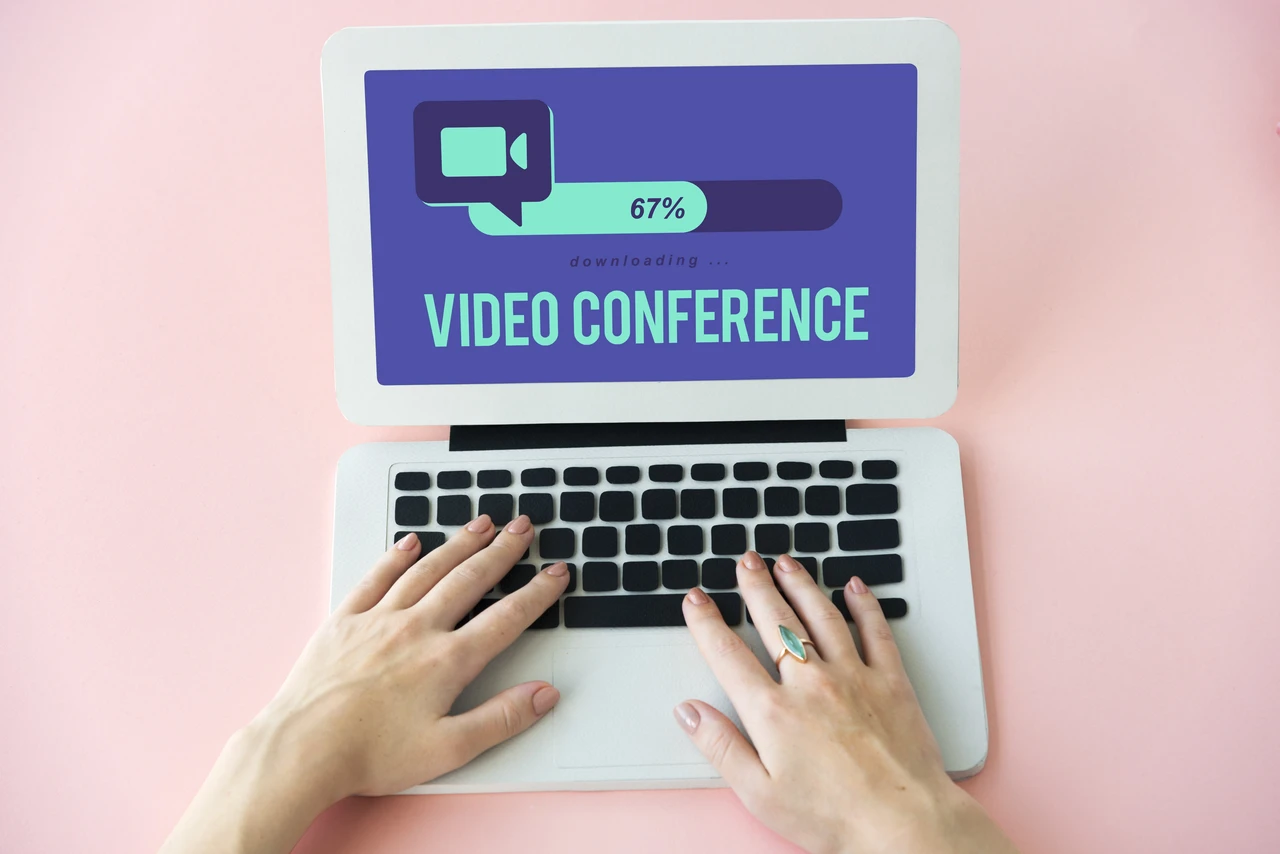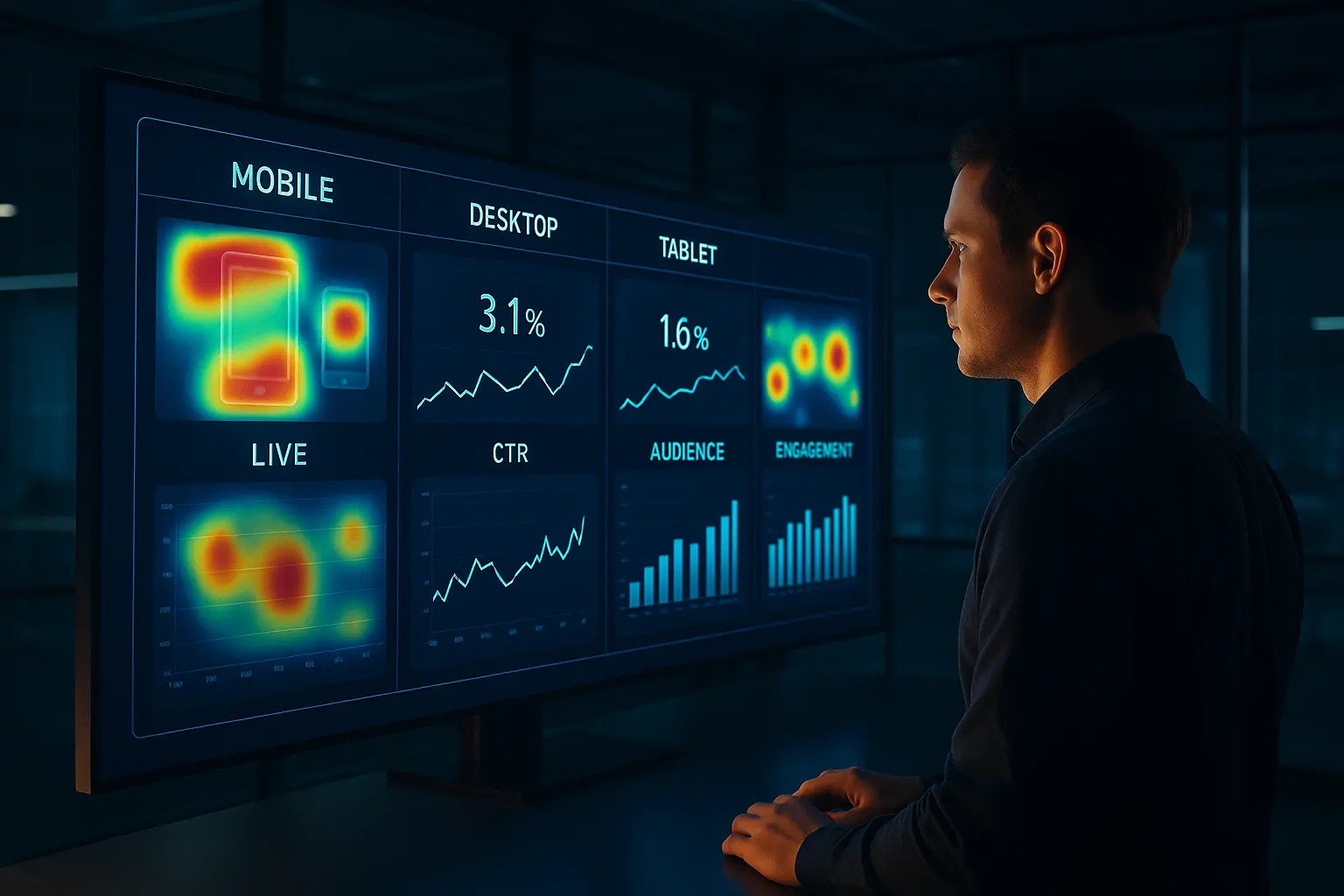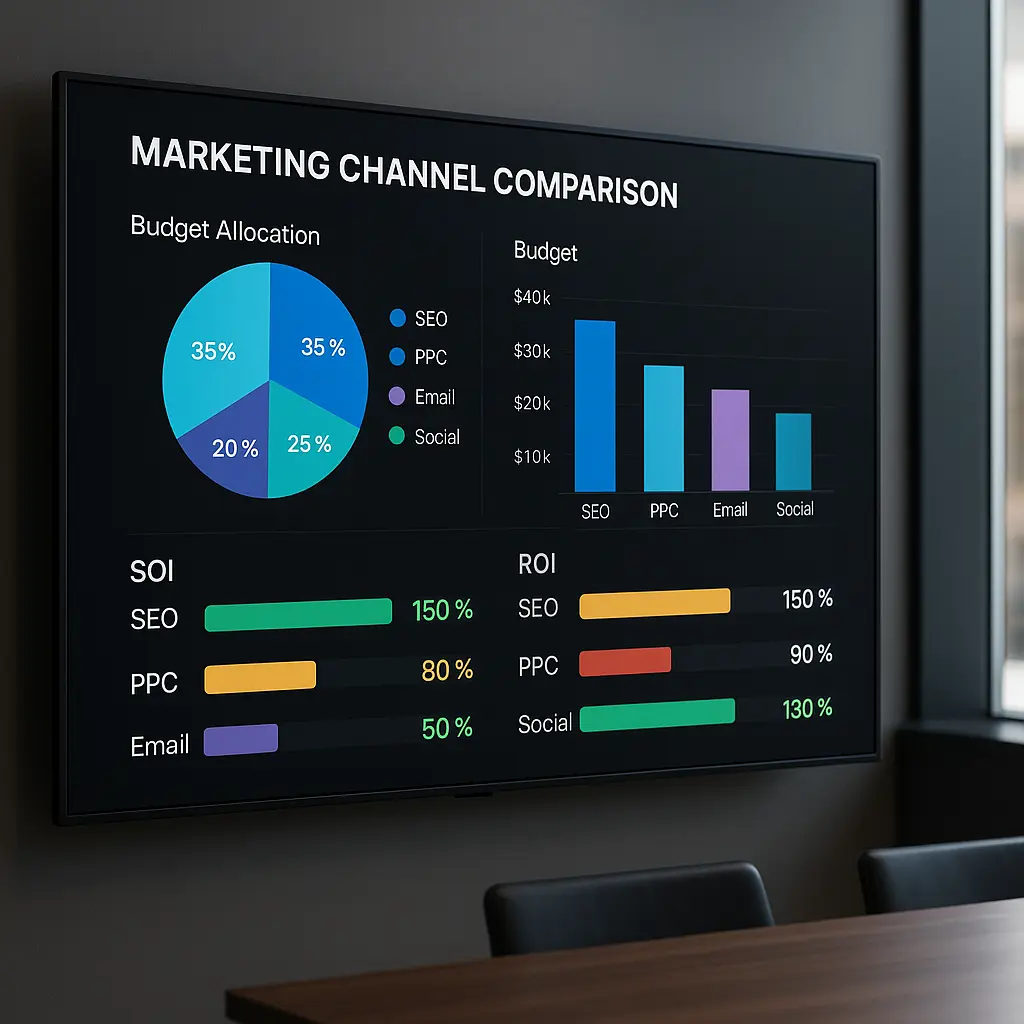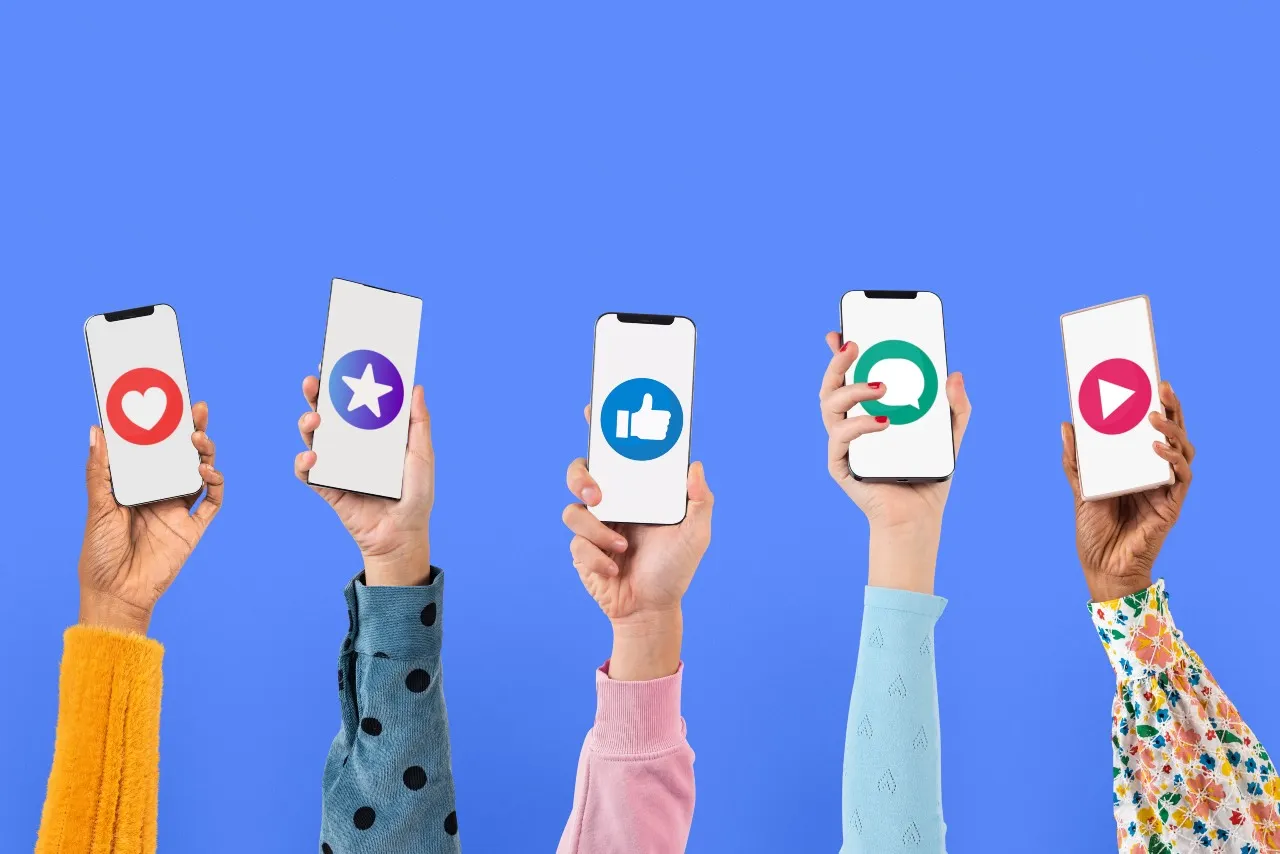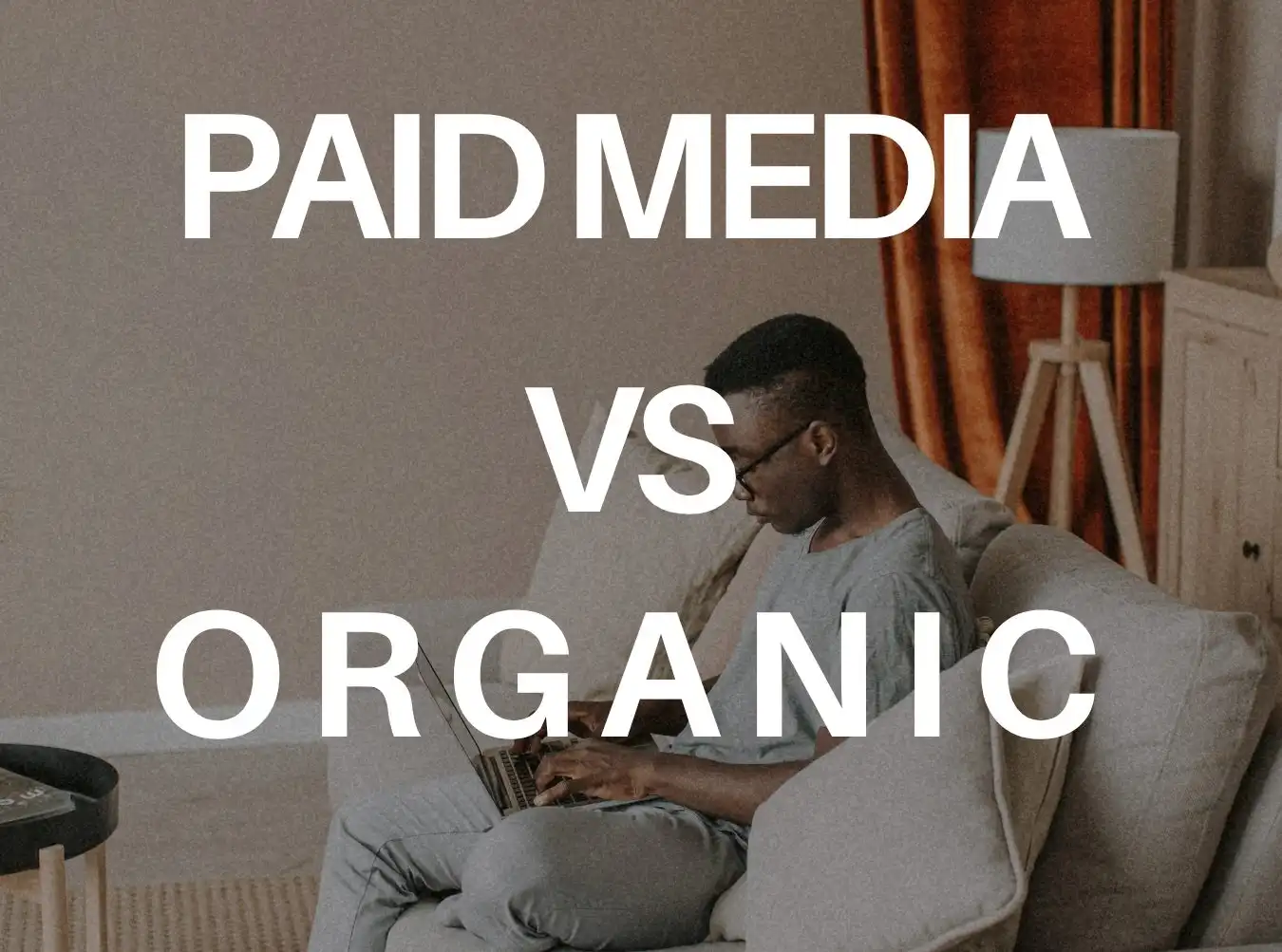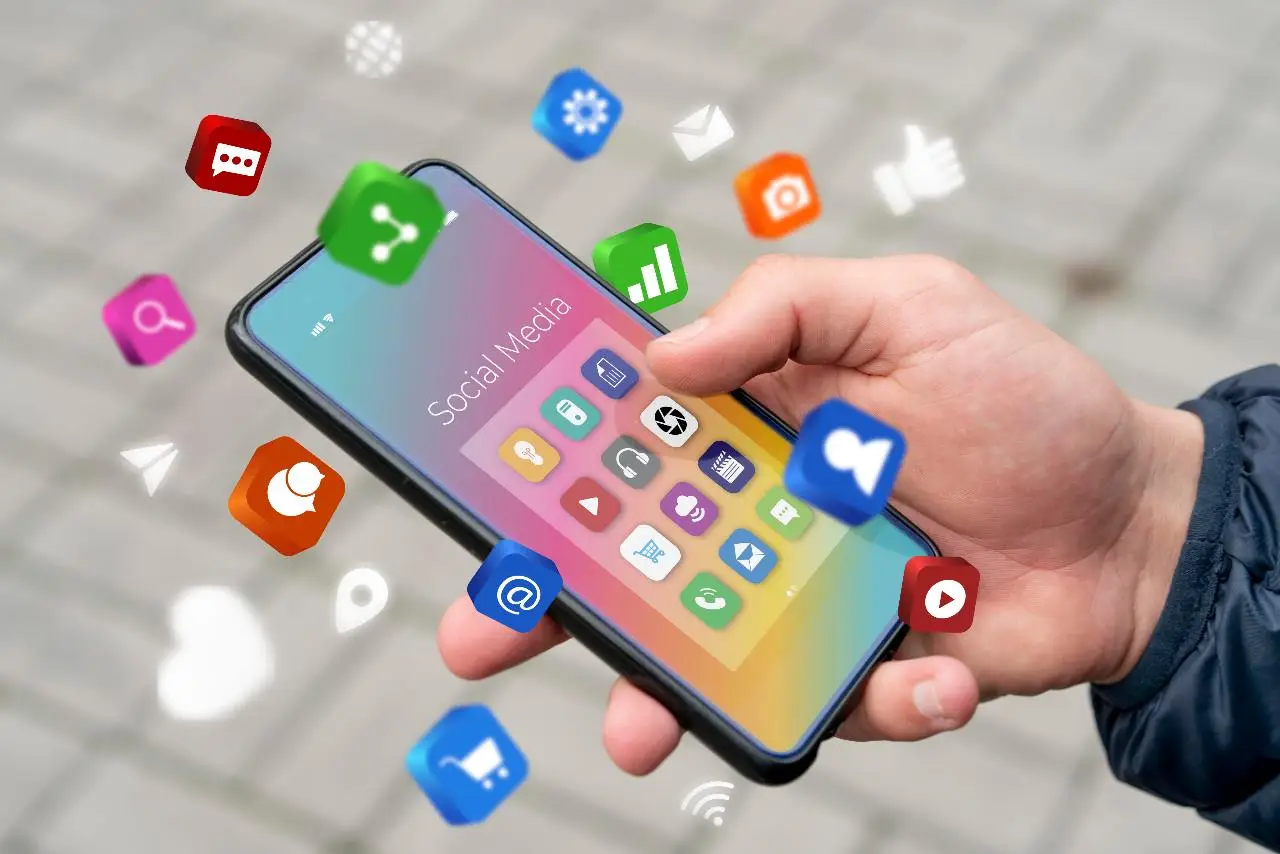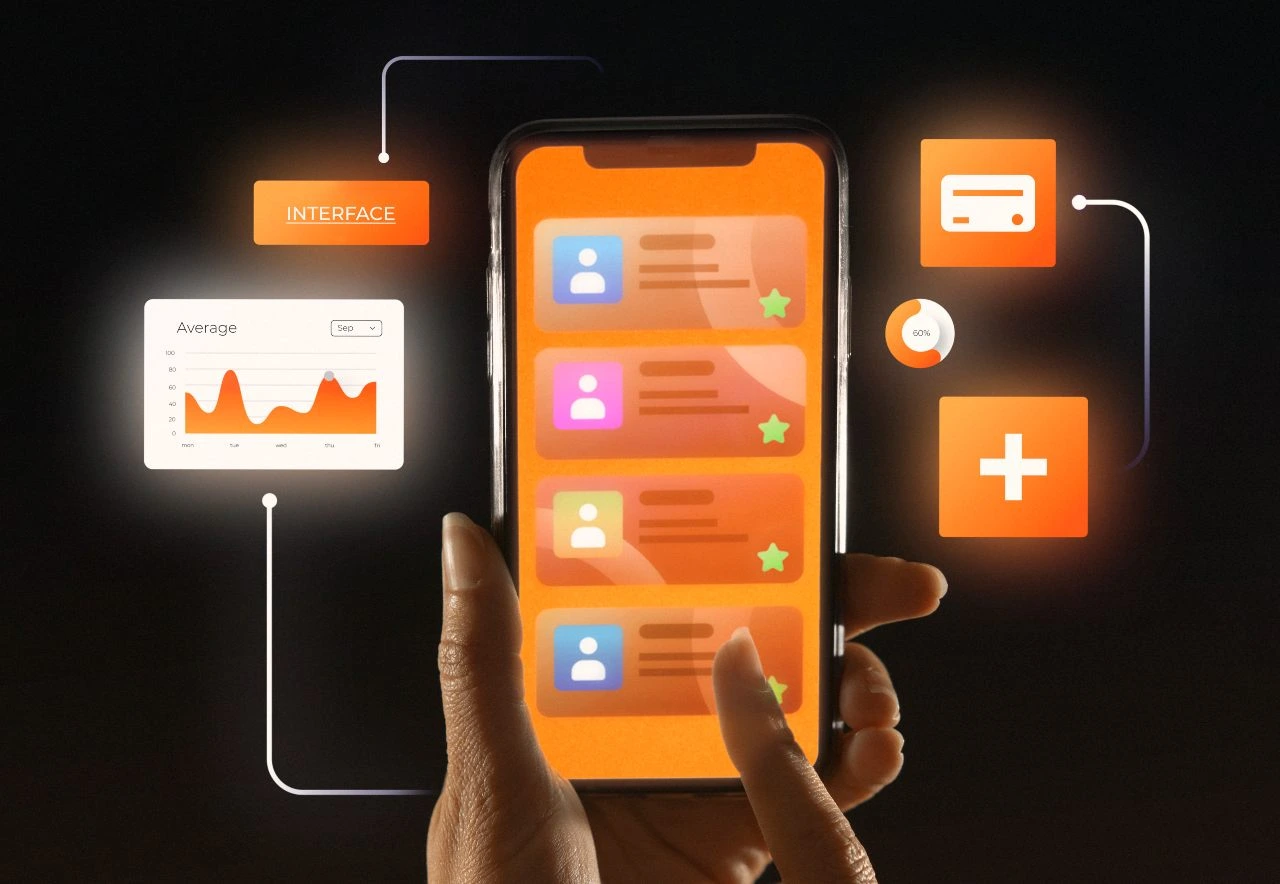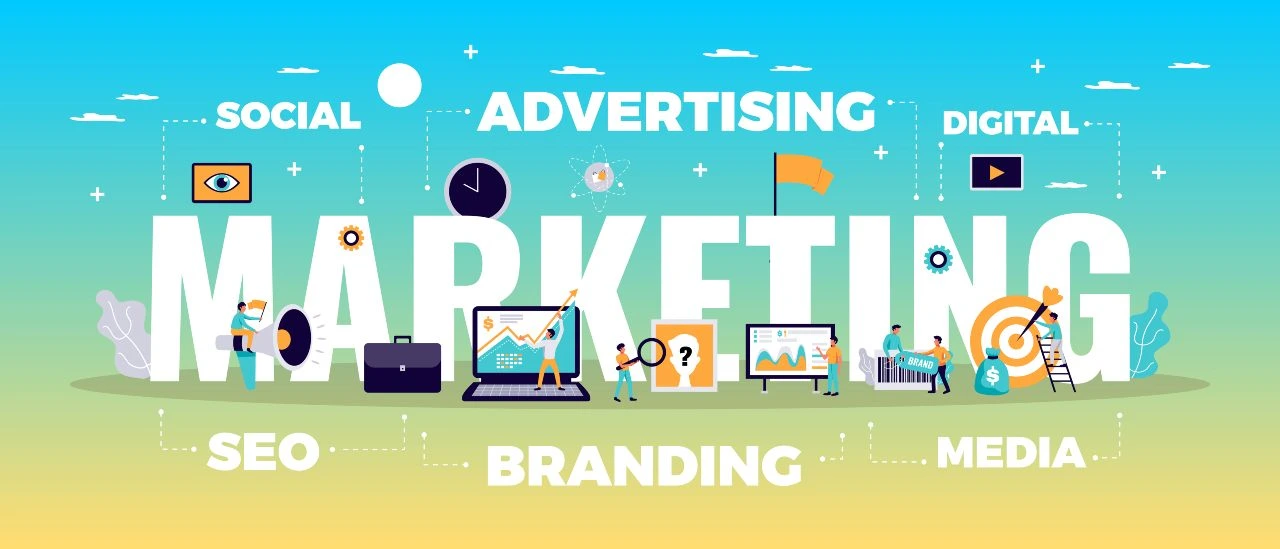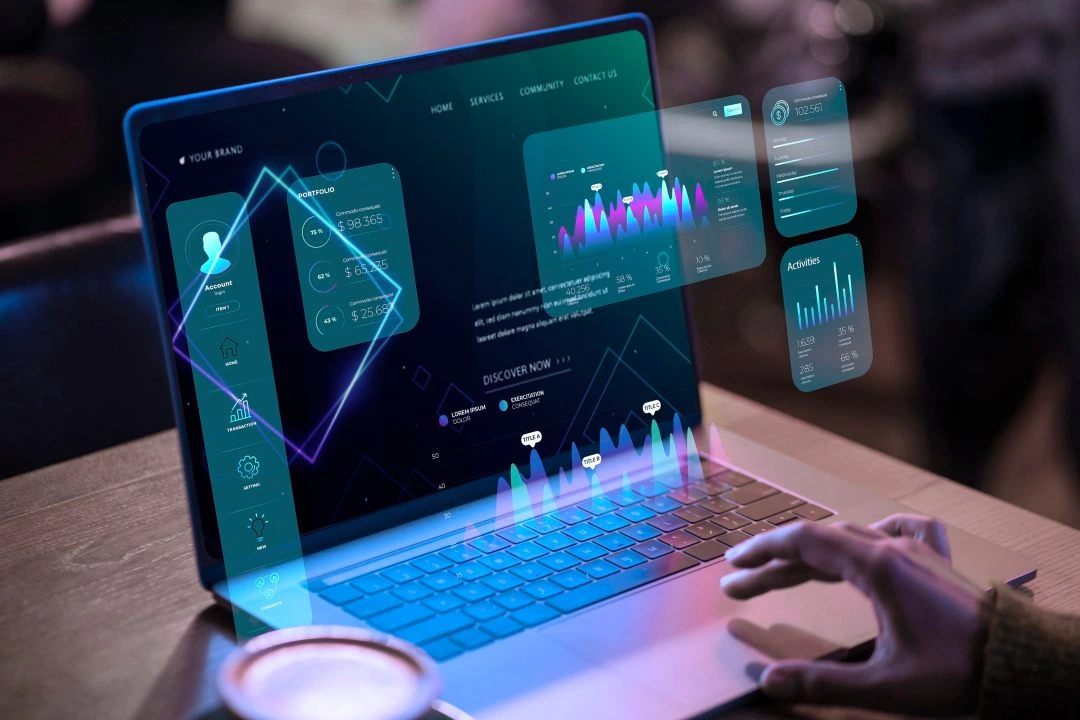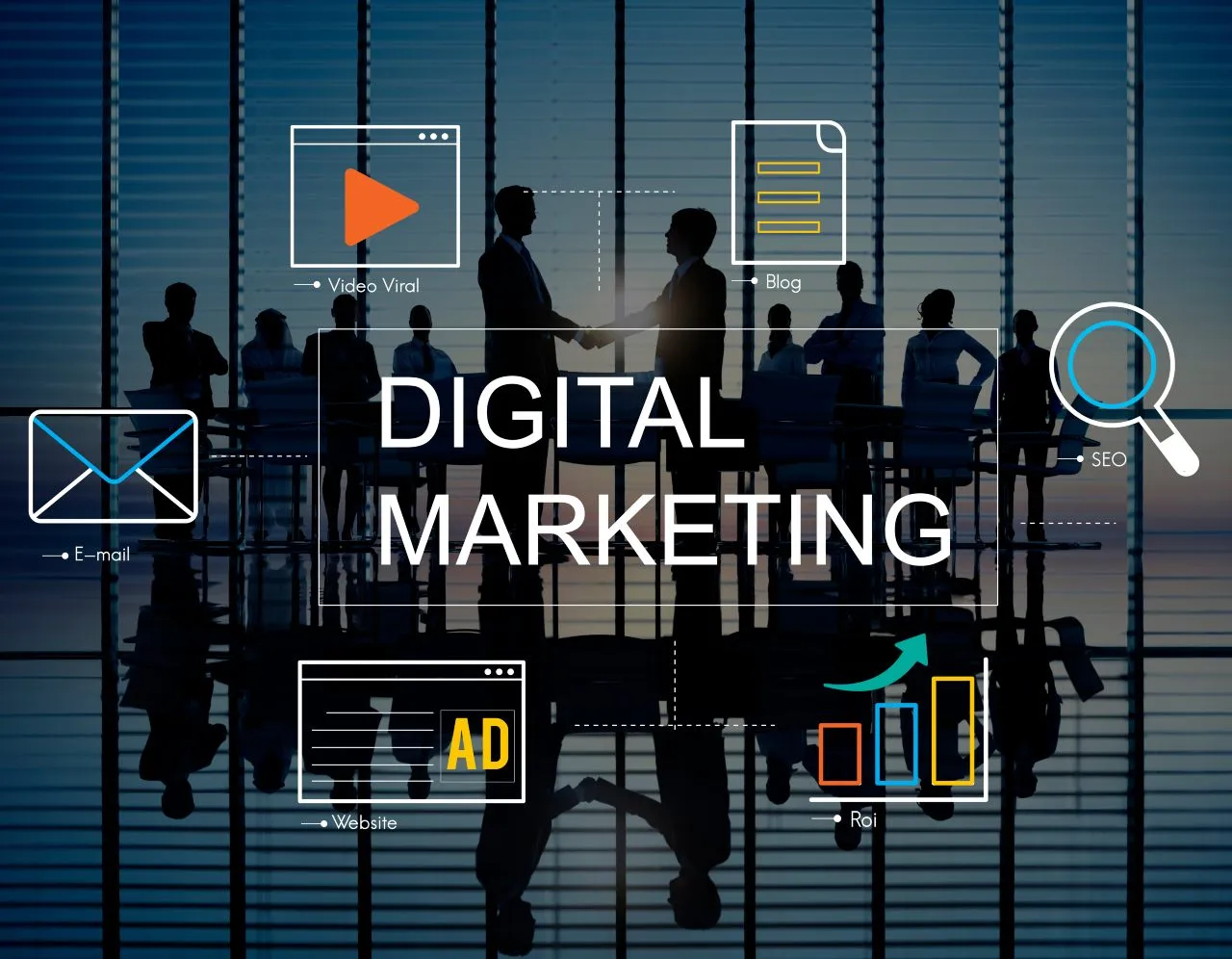Listen to article
Are you ready to unlock the secrets of visual-first marketing? In today’s fast-paced digital landscape, capturing and retaining audience attention is more challenging than ever. That’s where visual content steps in and steals the spotlight.
With consumers increasingly favoring videos and images, it’s no surprise that visual marketing is reshaping how brands connect with their audiences. From boosting engagement on social media to influencing purchasing decisions, the impact of visual content is undeniable.
If you’re not leveraging the power of visual marketing, you’re missing out on a goldmine of opportunities.
In this article, we’ll explore the latest facts and statistics that highlight the shift toward a visual-first approach, providing actionable insights to elevate your marketing strategies and stay ahead of the curve. Let’s explore the numbers and discover how visuals can transform your marketing game!
Why Visual Storytelling Is the Heartbeat of Social Media Engagement
In an era where attention spans are fleeting, visual storytelling has become the pulse of social media success. Whether it’s a compelling video or an eye-catching image, visual elements instantly grab attention and leave lasting impressions. More importantly, they deliver information faster and evoke stronger emotional connections—key ingredients for boosting engagement in a saturated digital landscape. Let’s unpack how visual content is driving transformative results across leading platforms.
- Social media posts featuring video content see a 48% increase in views and are shared 1,200% more often compared to text-and-image-only posts. Source
- Facebook Live videos generate three times more engagement than carousel posts, making them the go-to format for real-time interaction. Source
- Tweets with videos achieve 10 times more engagement than those without, proving the power of short, engaging visuals on fast-paced platforms like Twitter. Source
- Promoted tweets with videos can lower cost-per-engagement by over 50%, making video an efficient choice for ROI-driven campaigns. Source
- LinkedIn users are 20 times more likely to share video content than any other type of post, amplifying your content’s reach to a highly professional and niche audience. Source
Takeaway: Let Your Visuals Do the Talking
The numbers don’t lie—visual content doesn’t just drive engagement; it multiplies your social media marketing potential. Platforms like Facebook, Twitter, and LinkedIn are evolving into video-first ecosystems, rewarding brands that invest in impactful visuals with increased reach and lower advertising costs. As audiences crave more immersive and dynamic experiences, brands that lean into video storytelling stand to build deeper connections and foster loyalty.
Pro Tip:
Keep experimenting with your video styles. Test live streaming for real-time engagement, short-form clips for quick impact, or polished animations for storytelling. Remember to analyze performance metrics to discover what resonates with your audience and refine your approach. Tools like Canva, Animoto, and Buffer can help you create professional visuals without breaking the bank.
Why Visual Content is Now Non-Negotiable in Marketing
The way consumers interact with content is changing rapidly, and visual storytelling has taken center stage. From the surge in video consumption to the undeniable impact of eye-catching images, visuals aren’t just complementary—they’re essential for grabbing and keeping your audience’s attention. Brands that understand this shift are uniquely positioned to stand out in crowded markets and foster deeper connections with their audiences.
- 88% of individuals want brands to deliver more video content. Source
- Nearly 78% of people watch videos online weekly, and 55% do so daily. Source
- Back in 2021, 85% of consumers expressed interest in seeing more branded video content. Source
- Blogs with relevant images generate 94% more views than text-only blogs. Source
- 68% of B2B and B2C marketers aim to increase their use of visuals, including images, in the coming years. Source
Takeaway: Strategic Visuals Drive Meaningful Engagement
The numbers leave no doubt: whether it’s an engaging video or a thoughtfully placed infographic, visuals are vital for capturing audience attention and driving meaningful engagement. As platforms like TikTok, Instagram Reels, and YouTube dominate online interaction, brands that lean into visual-first strategies will be better equipped to navigate this consumer-led evolution. Prioritize substance in your visuals—story-driven videos, relevant graphics, and dynamic, shareable content consistently outperform static, sales-heavy content.
Pro Tip:
To amplify the effectiveness of your visuals, focus on platform-specific optimization. For instance, short, snappy videos under 60 seconds perform better on social platforms, while long-form content thrives on YouTube. Incorporating a mix of highly polished content and authentic, behind-the-scenes visuals can also help humanize your brand and build trust.
The Power of Video in Consumer Research and Buying Behavior
In a world where attention spans are shrinking and information overload is a constant, video has emerged as the bridge between education and action. Its ability to combine visuals, storytelling, and data into a digestible format is not just convenient—it’s transformative. Whether it’s simplifying complex product details or creating an emotional connection, video is reshaping how both consumers and businesses make decisions.
- 72% of consumers say they prefer to learn about a product by watching a video rather than reading a manual. Source
- Video significantly impacts decision-making, with 82% of consumers stating video content directly influenced their purchasing choices. Source
- Retention is unmatched: viewers retain 95% of a message when delivered through video. Source
- For B2B buyers, video is pivotal, with 88% of decision-makers using it to research products or services in the past three months. Source
- 14% of B2B buyers consider video the most valuable content for making informed purchasing decisions. Source
- On Instagram, 58% of users report becoming more interested in a brand or product after seeing it in Stories. Source
- 50% of users visited a website to complete a purchase after seeing a product in Instagram Stories. Source
- 1 in 4 consumers made a purchase after watching a product in an Instagram Story. Source
Takeaway: Video as the Catalyst for Consumer Decisions
Video is more than just an engaging medium—it’s a decision accelerator. From elevating consumer confidence to influencing last-minute purchases, its potency lies in its ability to be both educational and persuasive. For B2B marketers, video shortens lengthy decision cycles by providing clear, relatable information, whereas for B2C, platforms like Instagram Stories make it easy for brands to inspire immediate action.
Pro Tip:
To maximize video’s impact, focus on creating specific, actionable content. Develop product demos, behind-the-scenes looks, and interactive tutorials to cater to your audience’s curiosity. Additionally, use platform-specific features like Stories CTAs or YouTube end screens to drive traffic and conversions. Make sure your videos are mobile-friendly and optimized for every platform to meet your audience where they already are.
Mastering Mobile Video Marketing: Why Sound-Off and Visual Excellence Matter
The dominance of smartphones has reshaped how audiences consume video content, making mobile video marketing a critical strategy for brands. Today’s viewers are more likely to engage with videos on their phones, often in sound-off environments. To reach this audience, marketers must prioritize accessibility and visuals that captivate without relying on audio. Here are some compelling statistics that underscore why visual-first strategies are essential for mobile video success:
- 92% of consumers watch videos on their phones without sound, making captions a non-negotiable.
- 92% of users watch videos muted on social media, further proving the value of text overlays for accessibility and engagement.
- Short-form content resonates: videos under 90 seconds are particularly effective in capturing attention Source
- 70% of people who watch videos online do so on their smartphones, cementing mobile devices as the go-to platform.
- 93% of video viewers on X (formerly Twitter) use mobile devices, underscoring the importance of mobile-optimized content on social platforms.
- Video boosts app engagement: 77% of people who watch a video about an app end up downloading it.
- The shift toward DIY creation is evident, with 38% of marketing videos made using smartphone apps.
- Social sharing thrives on mobile: 92% of people who view a video on a smartphone will share it with others.
Takeaway: Captivate Audiences on the First Swipe
In a world where mobile-first behaviors dominate, marketers must design their video strategies with smartphone users in mind. Strong visuals, short-form formats, and accessible features like captions aren’t optional—they’re essential for engagement and shareability. The ability to make an impact without sound isn’t just a nice-to-have; it’s now the expectation of your audience. To stay competitive, brands should adapt to how content is consumed, leveraging mobile’s reach to build lasting connections with viewers.
For businesses looking to refine their overall approach and integrate video into broader campaigns, adopting a full-service marketing strategy can help align all digital efforts under one cohesive vision. By combining video, SEO, and other marketing elements, brands can create a seamless, impactful experience for their target audiences.
Pro Tip:
Elevate your mobile videos by testing different formats for maximum impact. Use analytics to measure performance and A/B test different styles, such as vertical vs. square formats, or text-heavy frames versus minimalist design. Don’t just create content—craft experiences that fit seamlessly into the mobile user’s journey.
Mobile-First Video: The Catalyst for Social Media Engagement and Conversions
In an era dominated by smartphones, mobile-first video content has become a driving force behind how consumers discover, engage with, and act on brand messaging. Video is no longer just a form of content; it’s a primary method of communication that connects seamlessly with today’s on-the-go audiences. For brands, understanding the nuances of mobile video consumption isn’t just helpful—it’s essential for boosting social media engagement and turning viewers into customers. Let’s look at some key statistics that paint a clear picture of why mobile-driven video content is so impactful.
- 92% of videos viewed on mobile devices are shared, demonstrating the massive viral potential of mobile-first content.
- YouTube remains a powerhouse, with 500 hours of video uploaded every minute and 70% of its content consumed on mobile devices.
- Short-form video is a conversion machine, with 77% of viewers stating that a short video convinced them to make a purchase or download something.
- Social platforms are evolving into multi-content hubs, with consumers increasingly using them to consume blogs, podcasts, and video content. Source
- Video listings are a lead-generation goldmine, as they drive 49% more qualified leads.
The path to social media success is paved with dynamic, mobile-first video strategies. As these statistics reveal, mobile devices amplify the reach, shareability, and conversion potential of video content. For marketers, this means prioritizing short, engaging, and mobile-optimized videos that resonate with audiences who consume content on the go.
Maximize the impact of your mobile-first video strategy by using vertical video formats, as they align naturally with how users hold their phones. Pair this with captions to boost accessibility and ensure your videos perform equally well in sound-on and sound-off environments.
Why Short-Form Video is Revolutionizing Marketing Strategies
Short-form video isn’t just a passing trend—it’s a cornerstone of modern marketing that’s transforming how brands connect with their audiences. Its bite-sized, visually rich format aligns perfectly with today’s short attention spans, making it a highly effective tool for driving engagement and delivering value quickly. For both B2B and B2C marketers, short-form videos have become a powerful way to communicate key messages and stand out in increasingly crowded digital spaces.
- A significant 90% of marketers who use short-form video plan to maintain or increase their investment in it for 2024, underscoring its ability to deliver stellar ROI. Source
- 65% of B2B buyers say they find short-form content—such as videos, blog posts, and infographics—the most engaging type of content, with its brevity being a key advantage. Source
- Over 55% of B2B marketers report that short-form social videos generate the highest ROI compared to other formats like case studies and webinars. Source
Short-form video’s widespread appeal lies in its ability to distill complex ideas into digestible, engaging stories in under a few seconds. For marketers, it provides an unparalleled opportunity to foster connections and influence customer decisions faster than ever.
To fully capitalize on short-form video, diversify your content by blending high-value formats like quick tips, trending memes, or thought leadership snippets. Track engagement metrics closely to uncover the styles that resonate most with your audience, and adapt your strategy for maximum impact.
How Interactive and Shoppable Videos are Redefining Customer Engagement
As digital marketing grows more competitive, brands are looking beyond traditional video formats to create experiences that leave a lasting impression. Enter interactive and shoppable videos—dynamic tools that bridge the gap between storytelling and conversion. These formats not only captivate audiences but also simplify the buyer’s journey, allowing users to seamlessly engage and shop without leaving the video environment. It’s a game-changer for the way brands connect with today’s multitasking, tech-savvy consumers.
- Interactive content fosters meaningful engagement, making viewers feel more connected to the brand. Source
- Interactive video features offer dynamic user experiences, boosting viewer interaction, driving conversions, and improving customer relationships. Source
- Shoppable video ads are on the rise, particularly on platforms like Instagram, Pinterest, TikTok, and YouTube, significantly increasing conversion rates. Source
- A staggering 92% of marketers claim video is an essential part of their overall marketing strategy. Source
- Leading platforms like Instagram and YouTube already feature shoppable options, with more social media platforms expected to follow suit. Source
- Shoppable videos are particularly effective for eCommerce brands, allowing them to capture attention and drive purchases in a seamless, distraction-free experience. Source
What This Means for Your Brand
Interactive and shoppable videos aren’t just trends—they’re the next phase of visual marketing evolution. By enabling viewers to directly interact with content or make purchases instantaneously, these formats provide a frictionless experience that blends engagement and action. For brands, this means a chance to build stronger emotional connections while simultaneously driving measurable results, from higher click-through rates to increased conversions.
Don’t just use video—elevate it with purposeful interactivity. Incorporate features like clickable product hotspots, polls, or quizzes to keep viewers engaged. Pair shoppable videos with performance analytics to refine your strategy and identify the elements that resonate most with your audience.
Capturing Younger Audiences Through Social Media’s Visual Power
In a world where younger consumers like Millennials and Gen Z increasingly seek inspiration and purchase decisions online, social media has solidified its role as the ultimate discovery hub. These highly visual platforms not only encourage engagement but also allow brands to build authentic and instant connections with their target audience. Whether through dynamic video content or interactive features, social platforms present a goldmine of opportunity for marketers ready to embrace their full potential.
- Social media is the top channel for Millennials and Gen Z to discover new products online, leading 74% of marketers to prioritize spending on these platforms. Source.
- Facebook plays a significant role with more than 8 billion daily video views, while Instagram’s Reels feature has driven a remarkable boost in video consumption. Source.
Today, social media is no longer just a “nice-to-have” marketing channel—it’s the heartbeat of how brands build relationships with younger demographics. The key lies in creating content that stands out in a sea of visuals—think eye-catching videos, authentic storytelling, and platform-specific features that resonate with Gen Z and Millennials.
Use data-driven insights to understand what your audience prefers on each platform and lean into innovative tools like augmented reality filters or TikTok trends to elevate your brand experience.
The Power of Mobile Video: Creativity as the Key to Engagement
With smartphones now serving as the go-to device for video consumption, mobile video marketing has emerged as a cornerstone of digital strategies. But in a world oversaturated with content, simply producing videos is no longer enough. To capture and hold attention in the palm of your audience’s hand, brands must bring originality, relevance, and innovation to their video marketing efforts.
- Mobile video remains a driving force in marketing, but by 2025, brands will need to elevate their creativity to stand out. Source
- The surge in mobile video consumption has heightened consumer expectations for both engaging and high-quality content. Source
The rapid rise in mobile video consumption signals an opportunity and a challenge for brands: meeting the rising demand for memorable, mobile-optimized content. As user attention spans continue to shrink and competition grows fiercer, investing in not just video production but thoughtful, innovative storytelling tailored to mobile screens is crucial.
Optimize for vertical formats like Instagram Stories or TikTok, where users interact with content natively on mobile. Incorporating quick cuts, captions, and visually striking elements can capture attention faster while reinforcing your message. Tools like Canva or InVideo can simplify creative video production without sacrificing quality.
Harnessing the SEO Power of Video Content
Incorporating video into your content strategy is more than a creative choice—it’s a data-backed method to strengthen your website’s authority, visibility, and organic reach. With the increasing preference for visual content among both users and search engines, videos have become a cornerstone for driving engagement and improving rankings. From attracting more inbound links to boosting SERP performance, video integration is reshaping how brands optimize for search.
- Blogs featuring video marketing generate three times more inbound links compared to text-only posts. Source
- 97% of top-ranking SERP pages include at least one visual element, proving the importance of integrating rich media like images and videos. Source
- 63.4% of web traffic in the US comes from Google, reinforcing the need for search-first strategies to maximize discoverability. Source
The emphasis on video isn’t just about making your content more appealing—it’s a mechanism for staying competitive in a search landscape dominated by Google’s algorithms. Search engines prioritize multimedia-rich websites, rewarding them with higher rankings and greater visibility. By strategically integrating video, you can unlock improved engagement, generate valuable backlink opportunities, and cater to the content preferences of both users and algorithms.
To maximize the SEO potential of your videos, focus on details that make a difference—like using target keywords in file names, adding timestamps to key moments, and embedding videos on pages that already rank well. Additionally, uploading transcripts not only improves accessibility but also provides more text for search engines to index, enhancing rankings further.
For businesses aiming to stay ahead in a highly competitive digital landscape, combining video content with broader digital marketing strategies for small businesses can help create a well-rounded approach that enhances both visibility and user engagement.
Unlocking Insights: How to Analyze Visual Content Performance in B2B Marketing
For B2B marketers, delivering impactful visual content is only half the battle. The real success lies in understanding how that content performs and how it influences your target audience. By systematically tracking the right metrics, you can uncover patterns, fine-tune your strategies, and ensure your efforts yield measurable results. With the growing emphasis on data-driven decision-making, knowing which metrics matter most gives you a competitive edge in a saturated market.
- The most common metrics B2B marketers use to assess content performance are conversions, email engagement, website traffic, website engagement, and social media analytics. Source
Takeaway: Data-Driven Strategies Amplify Visual Content Success
Tracking performance metrics isn’t just about knowing what worked or didn’t—it’s about creating a feedback loop that continuously fuels better decision-making and maximizes ROI. By keeping a close eye on metrics like conversions and engagement across channels, marketers can identify not just trends but opportunities for deeper audience connections. The key is to look beyond surface-level data and dig into what actions or behaviors this data represents.
Don’t stop at monitoring metrics—translate them into actionable insights. Use tools like Google Analytics, HubSpot, or Tableau to visualize performance trends, segment audience behavior, and identify gaps where your content strategy can improve. Analytics without action is just noise, so make sure to continually align these insights with your broader business goals.
Conclusion
The rise of visual-first marketing is not a fleeting trend; it’s a transformation rooted in how audiences consume and engage with content today. From social media to eCommerce, visual elements—especially video—are driving unprecedented levels of interaction, trust, and conversions. The data speaks for itself: brands that embrace visual marketing are better positioned to captivate audiences, communicate their value, and remain competitive in an ever-evolving digital landscape.
But it’s not just about embracing visuals—it’s about using them strategically. Whether it’s optimizing mobile-first videos, experimenting with interactive and shoppable formats, or measuring engagement through key performance metrics, a well-rounded approach is key to maximizing ROI. Visual marketing’s ability to enhance SEO performance, boost social media engagement, and even influence purchasing decisions underscores its broad-reaching impact across industries.
Don’t let your brand fall behind in a world increasingly dominated by visuals. If you’re ready to supercharge your business, don’t hesitate to get in touch with our full-service marketing pros for a free quote. Let us help you create visually compelling campaigns that engage your audience and drive measurable results.
About Creating Visual First Marketing: Why Visuals Are Driving Engagement
This guide was written by the Scopic Studios team and reviewed by Araksya Hakobjanyan, SEO Lead at Scopic Studios.
Scopic Studios delivers exceptional and engaging content rooted in our expertise across marketing and creative services. Our team of talented writers and digital experts excel in transforming intricate concepts into captivating narratives tailored for diverse industries. We’re passionate about crafting content that not only resonates but also drives value across all digital platforms.
Note: This blog’s images are sourced from Freepik.










